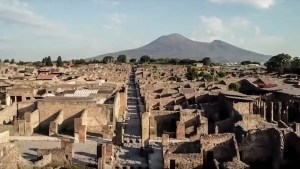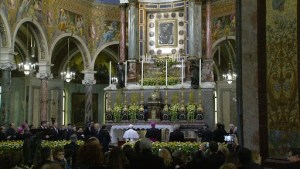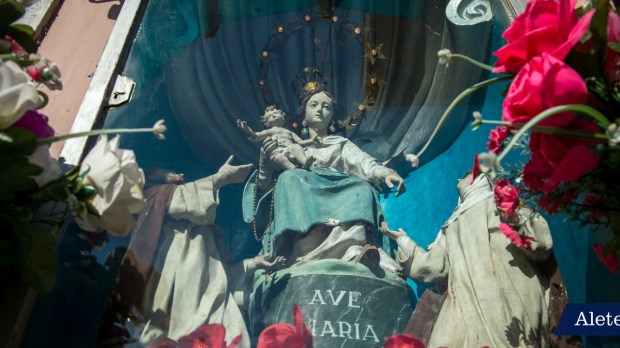We continue with our daily tour this month through a particular artistic expression of Marian devotion: Rome’s “Madonnelle” (“little Madonnas”). These are images of Mary—some of them miraculous—scattered throughout the streets and alleyways of the city. They are the object of much popular devotion. Follow the series here: Little Madonnas of Rome
Madonna of Pompeii: via Lodovico Pavoni 169
The three-story building at 169 Ludovico Pavoni Street, in Torpignattara, was built in the 1920s. “My grandfather Giovanni arrived in Rome from Caserta in 1922, and opened a bakery in this neighborhood. In 1928, he built this multi-story building,” one of the first in the neighborhood. And since he and his wife were very devoted to the Madonna, once the building was finished, they had a small shrine placed on the front, holding a statue of the Madonna—which even today is perfectly conserved, thanks in part to glass that protects it from the weather.

Read more:
Experience the somber beauty of Pompeii from a drone’s-eye view
It is clearly an image of the Madonna of Pompeii, represented according to the traditional iconography. The Virgin is seated on a throne, dressed in white with a blue mantle partially folded on her lap; Jesus stands on her lap, supported by her right arm. In the original image, both have a rosary in hand (although the rosaries are missing here, probably lost); the Madonna is offering hers to Saint Catherine of Siena, who is kneeling to the left of the Virgin, while Jesus offers his to Saint Dominic, kneeling on the other side. The Madonna is crowned, and her head is surrounded by a halo of 12 stars. “Hail Mary” is written on the throne. The statue is kept in a niche that has a blue painted background; the top of the niche is covered in stucco, in the shape of a seashell.

Read more:
Pope Francis Visits Shrine Of Our Lady Of The Rosary in Pompeii Before Naples Visit
Giovanni’s grandson, who lives in the building, takes care of the shrine’s maintenance: he keeps it clean, and fresh flowers are never absent. Every now and then, a passerby leaves fresh flowers too; thanks to these efforts, this little shrine is always well adorned. Under the shrine there is an inscription on a marble plaque: “May the morning go by, and the evening return; you, turn to Mary in prayer.”
~
Follow the series here: Little Madonnas of Rome
See more articles like this at Aleteia’s Art & Travel section.

